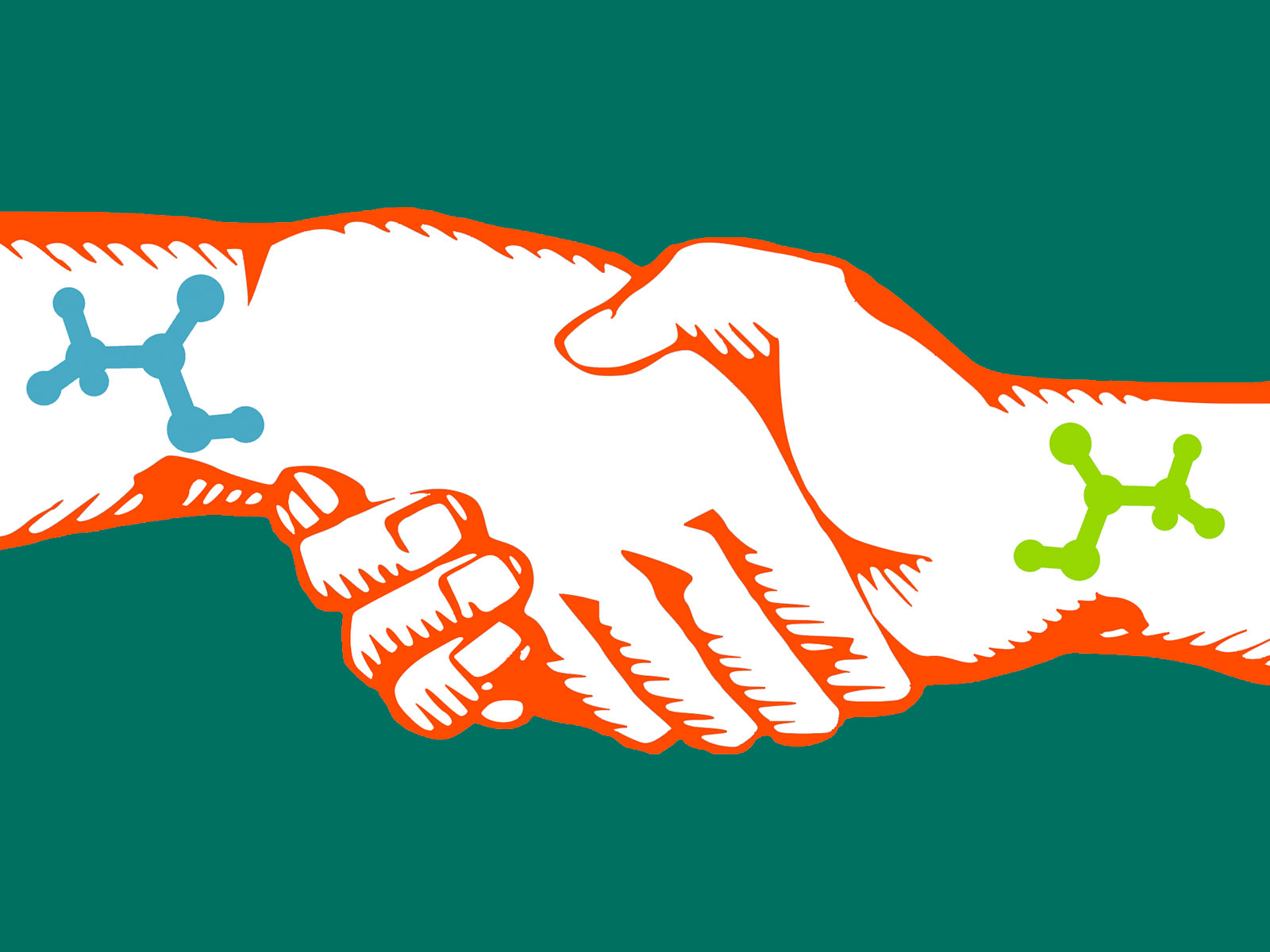Exceptional measurement of chirality

Picture: © Royal Society of Chemistry
Imagine trying to shake a friend’s left hand with your own right hand – it wouldn’t be a very good fit.
Similarly, some molecules can be left or right-handed. Although these are mirror images – the chemistry term is enantiomers, or chiral molecules – they can interact completely differently with other molecules found in nature.
This phenomenon can be incredibly important in the pharmaceutical, agricultural and other chemical industries. A well-known example of this is the drug thalidomide, prescribed during 1957-1961 as a sedative for pregnant women. Tragically, one of the mirror-image molecules caused birth defects in thousands of infants.
And although methods to effectively detect and monitor chirality are vital, they are also technically complex. Now, cutting edge research published in Chemical Science has overcome several technical hurdles faced by a technique called VCD.
"It is now possible to determine the handedness of molecules much more reliably and with better quantitative measures than before," said corresponding author Wybren Jan Buma, from the University of Amsterdam and Radboud University. "And this is definitely in many respects a breakthrough that is much appreciated in the scientific and application-oriented community."
VCD is a detection technique that distinguishes between mirroring molecules by taking advantage of the fact that light can also be left and right-handed. For instance, left-rotating light interacts differently with different enantiomers – leading to a unique fingerprint.
However, the applications of VCD are currently limited by technical constraints. Theoretical fingerprints have to be corroborated by experimental data to verify which handedness they actually have. Furthermore, measuring enantiomers isn’t as simple as "left is left, and right is right", as molecules are not static and rigid – they are flexible and dynamic in time and space, and variations differ in their relative quantities.
To date, techniques have taken an "average" of the possible theoretical fingerprints. However, this can lead to the mistaking of one handedness for another.
"You might intuitively think that a calculated number is something absolute, without uncertainty, but this is definitely not the case," said Buma. "In the worst case it might be that one type of calculation would lead to the conclusion that the molecule has one particular type of handedness, while another type of calculation would lead to the opposite conclusion."
The researchers overcame this by creating an algorithm which introduced uncertainty in place of the average calculated molecular energies. This was achieved by using a "genetic" algorithm – which uses the principles of evolution and "survival of the fittest" to get optimal results.
Buma said: "The beauty of our approach is that the correct handedness always gives better agreement with the experiment than the opposite handedness, and, even more importantly, that we can give a quantitative measure of how reliable the assignment is.
"Our research, and that of others, has now shown that VCD is in reality a technique that is both easily accessible and opens up unique possibilities for applications, in areas ranging from real-time monitoring of biochemical processes to high-throughput screening of pharmaceutical compounds."
This article is free to read in our open access, flagship journal Chemical Science: Mark A.J. Koenis et al., Chem. Sci., 2019, Advance Article. DOI: 10.1039/C9SC02866H1. You can access our 2019 ChemSci Picks in this article collection.